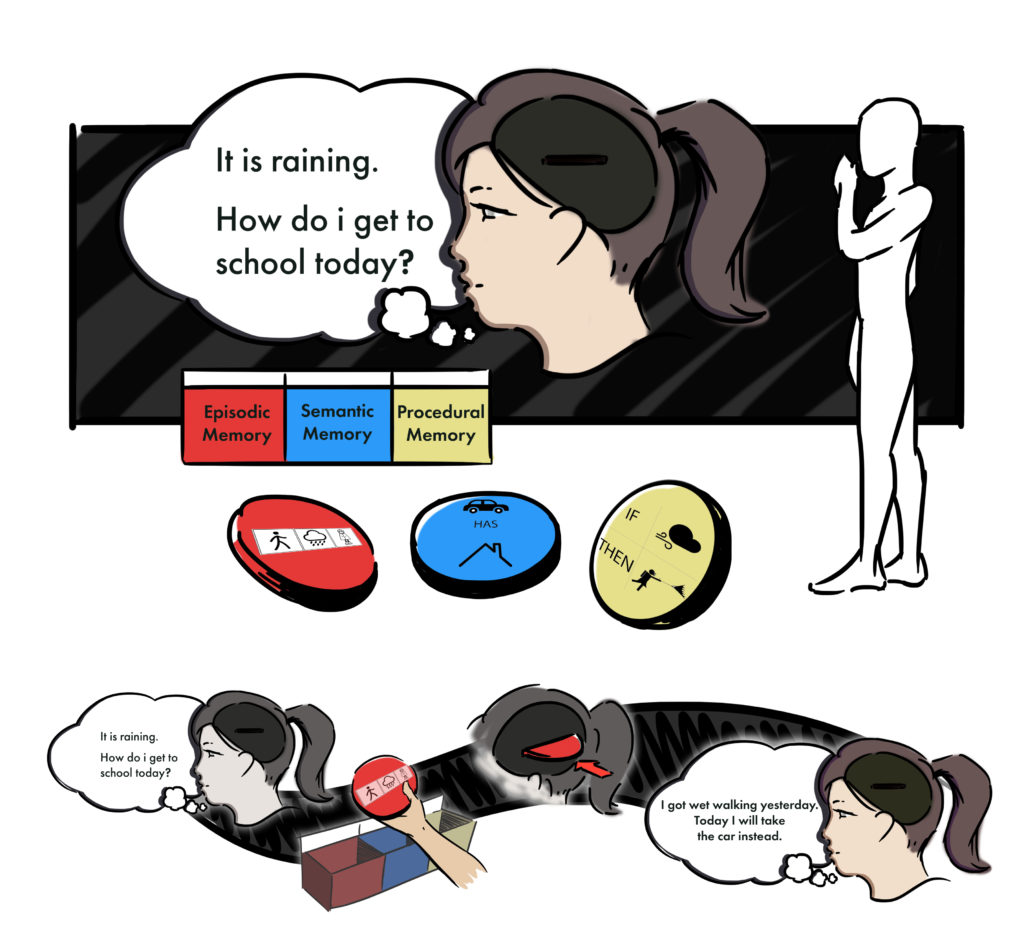Museum visitors will be asked to act as the “planner” for an AI agent- in other words, visitors will be in charge of finding relevant information in the agent’s memory and inserting it into the agent’s “mind” in the order that it is needed. This falls into a genre of AI learning initiatives that engage learners in embodied simulations of algorithms as a way of making them more relatable and understandable.
The agent’s memory is represented as three boxes of pucks- episodic memory (i.e. memory that consists of past experiences), semantic memory (i.e. memory that represents the relationship between objects and entities), and procedural memory (i.e. if-then rules). When the agent asks a question, the visitor is in charge of choosing pucks from the three bins and inserting them into a slot in the agent’s head so that it is able to solve the problem. The agent will then visualize its response to the problem in its thought bubble.
Competencies: decision-making; representations
Design Considerations: social interaction; embodied interaction
